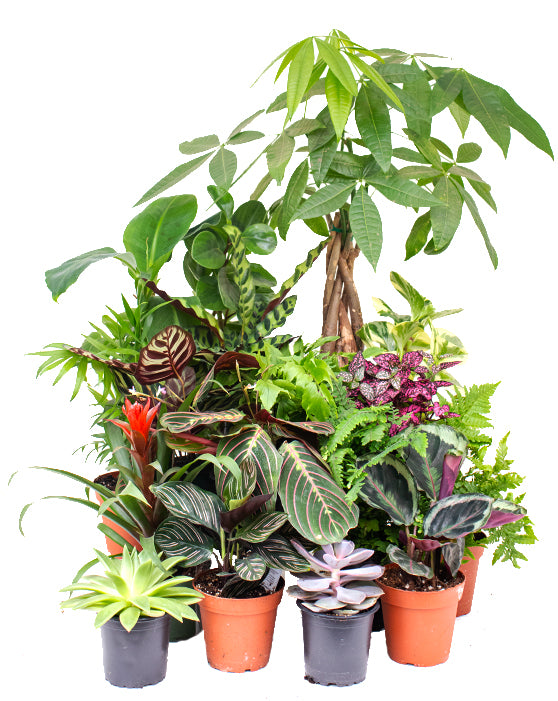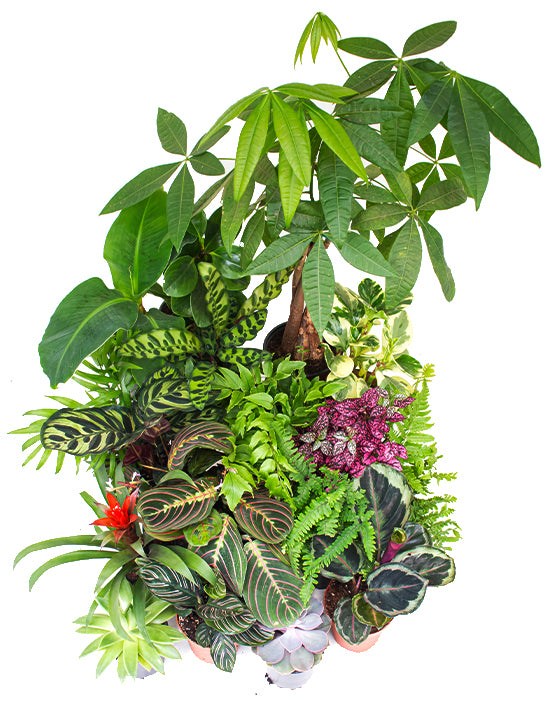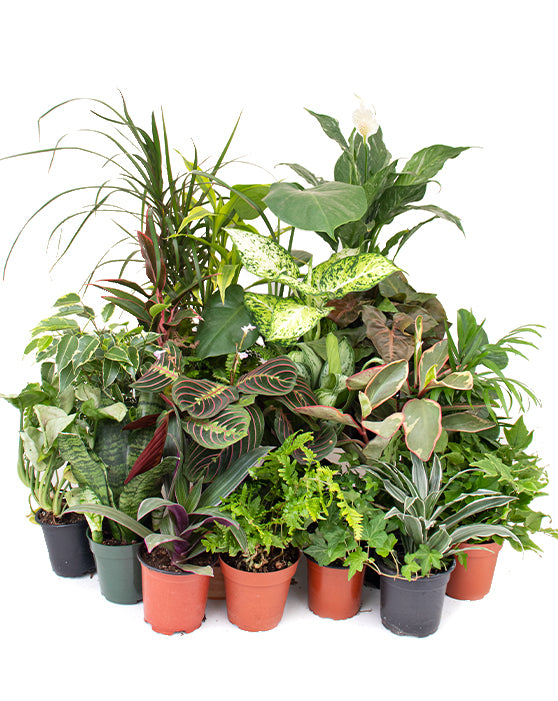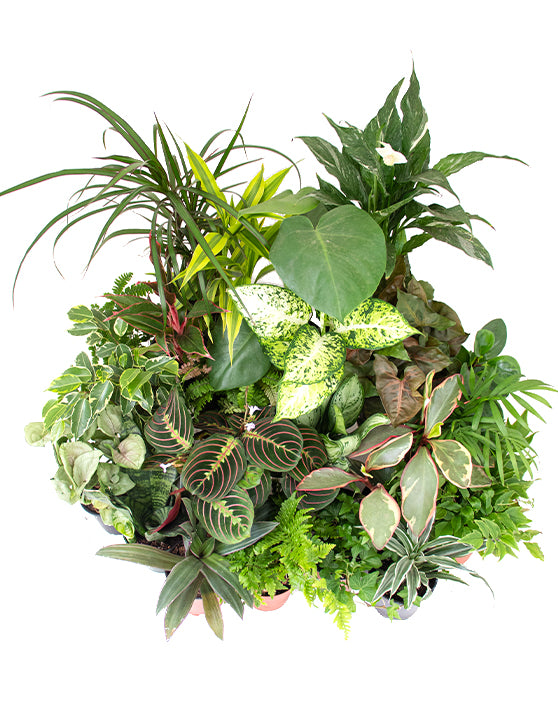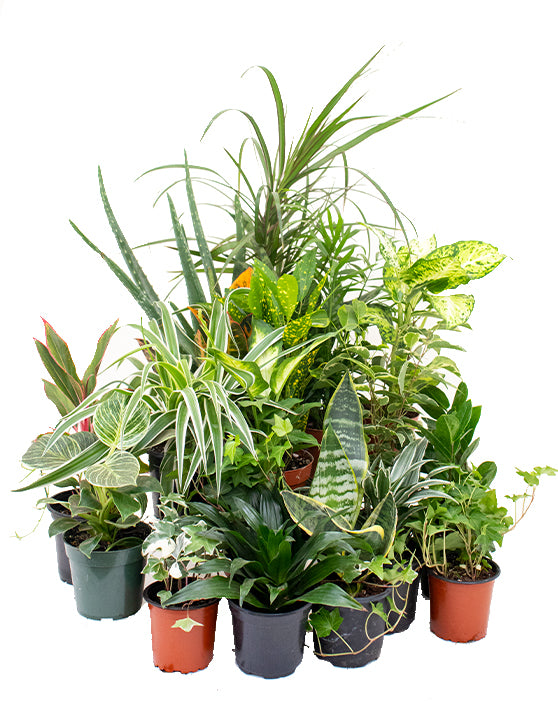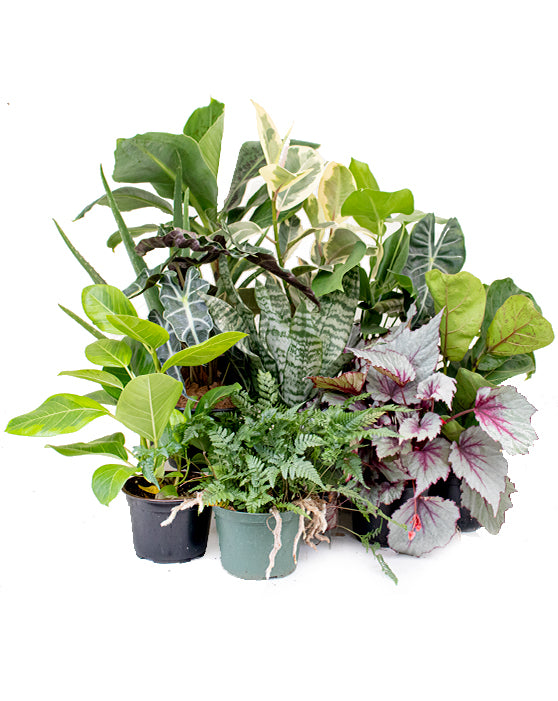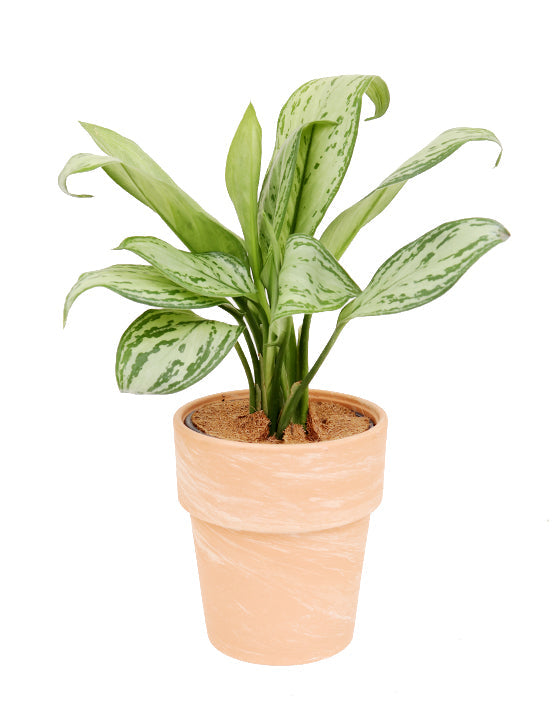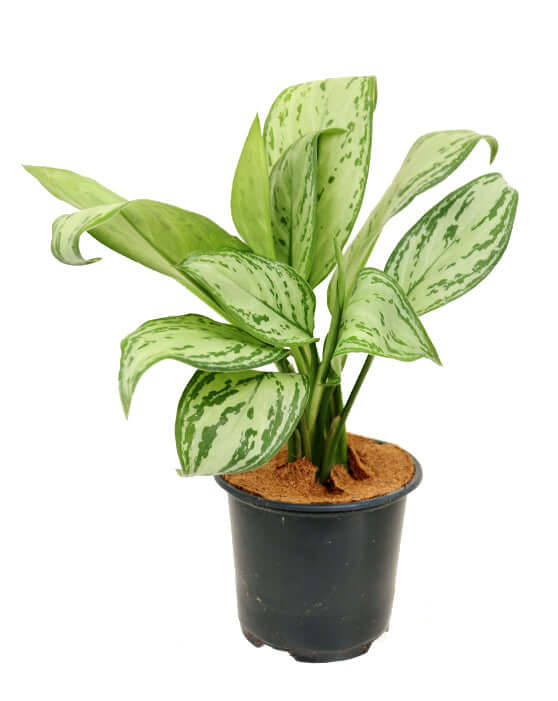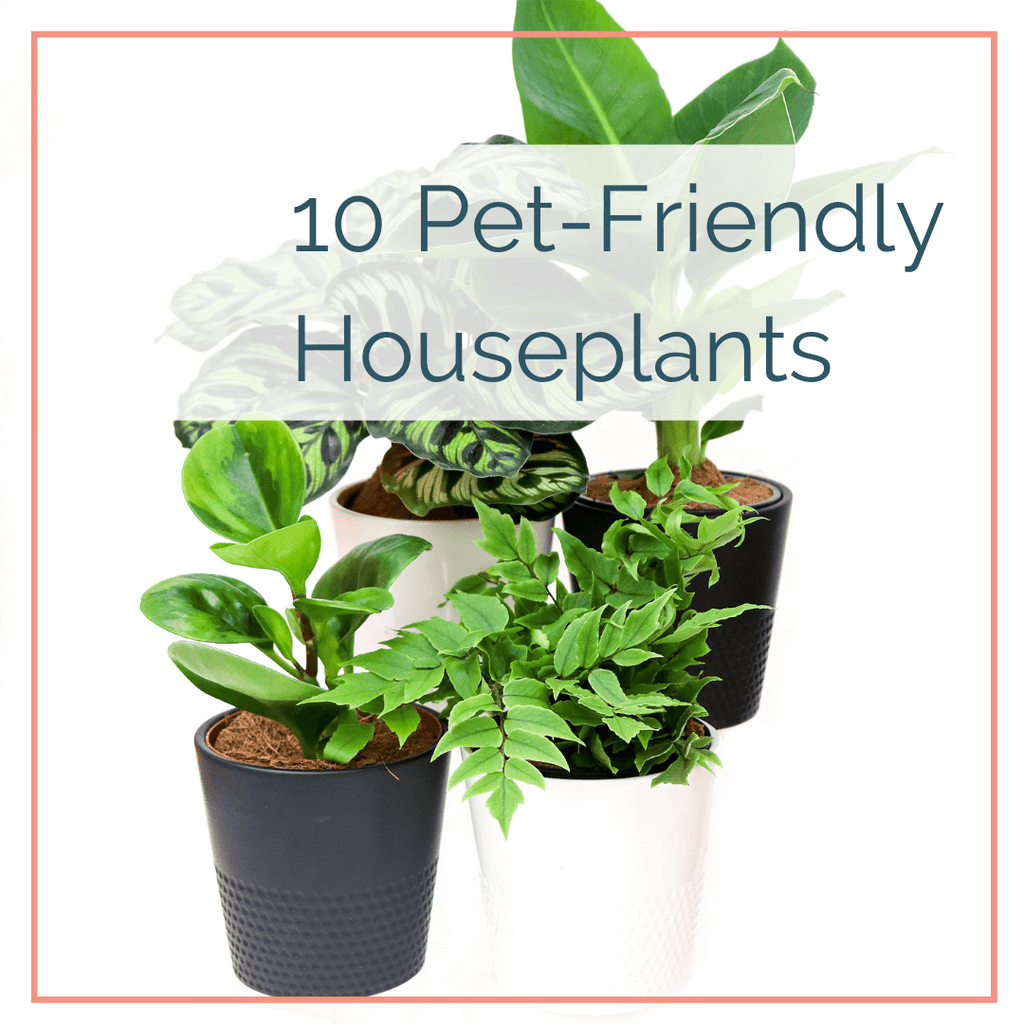
10 Popular Pet-friendly Houseplants

Buying a houseplant is a great way to boost your mood, create a great living space and help clean your air from toxins, but sometimes we have curious fur friends that like to get into everything! My cats love to eat my ornamental grasses and my new puppy tries to taste anything at head level. So we've made sure that any plant she might get into won't cause a rush trip to the vet.
Here is a list of pet-friendly houseplants that your pets can enjoy with you!
1. Peperomia 'Baby Rubber Plant'
Peperomia have an enormous number of varieties, giving you lots to choose from! Typically your peperomia is an easy-going houseplant that is very forgiving if you miss a watering. Their leaves are thick, smooth, and store water very similar to succulent foliage!
Tip* Your Peperomia love bright indirect light but can tolerate low-lighting. Try not to place your peperomia in harsh direct sun.
2. Most Varieties of Ferns
When it comes to Ferns and pets, you are usually in the safe zone! Maidenhair, Boston, Japanese Holly Ferns are just a few names that are pet-friendly.
Beware! There are a few plants that have the name Fern in their common name that are toxic. For example, Asparagus Fern is part of the Lily family.
Ferns prefer to be in a low-light area, with some filtered light. If your Fern is getting too much sun, you might notice them getting crispy edges on their leaves.
Tip* When it comes to watering your Ferns, they prefer it moist but will start to rot if they are sitting in water for a long time.
3. Polka Dot Plants 'Hypoestes'
This colourful green addition is safe when it comes to your furry friends!
Polka Dot Plants can come in a variety of colours: green, pink, purple, red and, white. The leaves will have a pattern of dots giving this plant its common name.
This plant left untrimmed can get taller than 2 feet. Usually, due to these plants getting used in planters, they get cut back to under 12 inches. This is an easy process of pinching off stems at their off-shoot point when they get too long.
Like a lot of houseplants, your Polka Dot Plant likes to be in bright indirect light. If this plant is in a low lighting area, you may notice the colour fading and the plant becoming more leggy than bushy.
Tip* When watering your Polka Dot Plant, we suggest letting your plants dry out between waterings. If your plant has too much moisture, it may start to have root rot. To check if your plant needs water push down on the soil, if the top ½ inch of soil is dry, then it’s time to water.
4. Musa Banana
Your Musa Banana is one hardy tropical!
Try this Banana in an area you want large leaf coverage or bring it outside on the patio. If you have planted your Banana outside, cut it down to the ground and cover it with mulch to help it survive over our colder temperatures in the winter. (Zone 4 or higher). If you bring your Banana inside, remember to do so before nights get below 10 degrees Celcius to avoid shock and leaf loss.
Some of your hardier Banana varieties might not produce fruit, or they may produce inedible fruit. Although they still give off that tropical vibe in anyone’s home!
Tip* Banana trees do their best when you place them in an area that gets full direct sunlight. In between each watering, allow the soil to dry out. Remember, banana plants are tropical and grow in rainforests, loving moisture, so don’t forget about them!
5. Calathea
There are a vast number of varieties of Calathea, all unique in their ways!
This makes it a great plant to liven up your home with. For example, check out our Rattle Snake plant, a Pin-Striped Calathea or Peacock plant. You'll see that each has a highly varied leaf colour, look and pattern.
Calathea is part of the Marantaceae family. Similar to Prayer Plants, so you may notice that your leaves will react to the night by moving their leaves more upright.
This plant will do well in partial-full indirect light. In most cases it will also tolerate low lighting spaces.
Tip* Calatheas have a delicate root system and do not like to be overwatered. When picking a pot for your new green friend, be sure to pick one with good drainage or water your plant outside of its pot and place it back in when the water has drained through.
6. Bromeliad Guzmania
This tropical houseplant will brighten any living area with its colourful flowers!
Being an easy-care houseplant makes Bromeliad a great green gift for someone special in your life! It's also a wonderful addition to an indoor garden arrangement as the centre of attention.
Your Bromeliad will grow best in bright indirect light. Putting this plant in direct sun will damage your plant.
Guzmania, in addition to getting water from their roots, also absorb it through their leaves and central tank. Please keep in mind your Bromeliad doesn’t like having wet feet.
Tip* Fill a small tray or your sink partially with water. Take your bromeliad out of its decorative pot and place it in the water to absorb water from the bottom up. Once saturated place your plant back in its pot. This way you never have to worry about overwatering and you have less chance of problems that can be caused by watering from above.
7. Prayer Plant
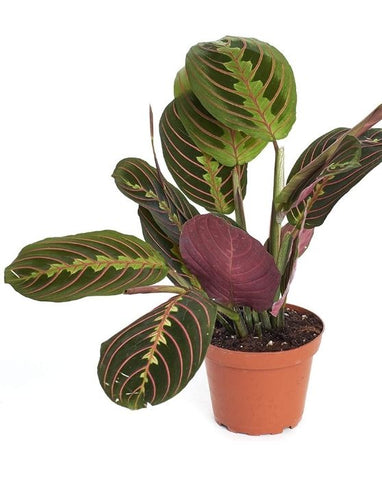
Prayer Plants have beautiful oval-shaped foliage! They are an easy but slow-growing plant with variegated leaves that vary in colours and patterns, which differ between the varieties.
Where does the name come from? Prayer Plants get their name from their leaves, raising to an upright position at night.
Although this plant can tolerate living in low lighting conditions, it prefers to be in bright indirect light. If you put your Prayer Plant in direct sun, please beware it might cause scorch its leaves.
8. Orchid

In the Orchid family, you can find thousands of different species. One of the most common is the Phalaenopsis Orchids.
Your orchid will like well-drained growing media, it won’t survive if planted in the soil. It prefers bark, peat moss, cork, etc. At most Garden Centers or Florists, you may be able to find an orchid planting mix that will usually consist of bark, moss, and perlite.
Orchids prefer to be in bright indirect light. If your orchid is in direct sun, it can result in leaf scorch, and low-lighting will affect your flowers or lack of flowers.
9. Haworthia
This easy-growing plant is part of the succulent family and loves the sun! However, having it in the intense afternoon sun can cause damage to their foliage.
Your Haworthia is more drought-resistant than most houseplants. Water your Haworthia only when you notice the soil is dry. During the winter you can slow down your watering even more as plants go through a dormant period. Overwatering your green friend can cause the plant or roots to rot!
Similar pet-friendly succulents to try out are Echeveria, Pachyveria, Lithops, Aeonium, Sempervivum, Sedum & Christmas Cactus.
Remember not all succulents are pet safe. If you have curious pets, then try to stay away from Crassula, Aloe Vera, Sansevieria ‘Snake Plant’, Jade Plant, Kalanchoe & the Senecio ‘Chalk stick & Sting Family’.
10. Parlour Palm

Parlour Palm is one of the most popular palms. This plant loves indirect light. Putting this Palm in direct sun will damage the leaves.
This Palm is a fast-growing palm that adds 6-10" per year in growth. Full-grown Parlour Palms can get up to 6-8’ in height.
Tip* Your Palm prefers to be on the moist side. Letting your Palm sit in water can do damage to the roots. Misting your palm is a great way to add humidity!
For all you new plant parents, we hope this list assists you in your choices. If you have more questions? No problem! Reach out to us by emailing Hello@Tropico.ca. We would love to help!









